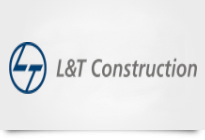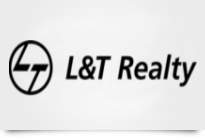The Monetary Authority of Singapore (MAS) has issued the Technology Risk Management Guidelines to help financial institutions manage their technology risks. The guidelines cover a wide range of topics, from establishing a sound technology risk governance framework to implementing technical controls to protect IT systems.
As part of our Compliance practice, our experts help financial institutions by conducting a comprehensive Monetary Authority of Singapore (MAS) Cybersecurity Compliance Audit to ensure that our customers meet the requirements of the TRM Guidelines.
The TRM Guidelines are designed to help Financial Institutions:
- Understand their cyber risk exposure
- Develop and implement a risk-based approach to cyber risk management
- Mitigate cyber risks and respond to cyber incidents
The guidelines are not prescriptive, but they provide Financial Institutions with a framework to develop their own technology risk management programs. The guidelines are also aligned with international standards, such as the ISO 27001 standard for information security management.
Key requirements of the MAS Technology Risk Management Guidelines
The TRM Guidelines set out a number of key requirements for Financial Institutions, including:
- Establishing a sound cyber risk governance framework
- Conducting regular risk assessments
- Implementing appropriate technical controls
- Raising awareness of cyber risks among staff
- Responding to and recovering from cyber incidents
1. Establishing a sound technology risk governance framework
The MAS Technology Risk Management Guidelines emphasize the importance of having a sound cyber risk governance framework in place. This framework should be led by the board of directors and should involve all levels of the organization. The framework should include the following elements:
- A clear statement of technology risk appetite
- A process for identifying, assessing, and mitigating cyber risks
- A process for monitoring and reviewing cyber risks
- A process for reporting on cyber risks to the board of directors
2. Conducting regular risk assessments
Financial Institutions are required to conduct regular risk assessments to identify and assess their cyber risks. The risk assessments should be based on a risk-based approach, taking into account the organization’s size, complexity, and risk profile. The risk assessments should also consider the latest threats and vulnerabilities.
3. Implementing appropriate technical controls
Financial Institutions are required to implement appropriate technical controls to protect their IT systems from cyber attacks. The technical controls should be proportionate to the organization’s risk profile and should be regularly reviewed and updated.
4. Raising awareness of cyber risks among staff
Financial Institutions are required to raise awareness of cyber risks among their staff. This includes educating staff about the latest threats and vulnerabilities, as well as the importance of following security procedures.
5. Responding to and recovering from cyber incidents
Financial Institutions are required to have a plan in place for responding to and recovering from cyber incidents. The plan should include the following elements:
- A process for detecting and responding to cyber incidents
- A process for containing and mitigating the impact of cyber incidents
- A process for restoring IT systems and data
The TRM Guidelines are an important resource for Financial Institutions in managing their cyber risks. By following the guidelines, Financial Institutions can help to protect themselves from cyber attacks and mitigate the impact of any incidents that do occur.
Conclusion
The MAS Technology Risk Management Guidelines are a comprehensive set of guidelines that provide Financial Institutions with a framework for managing their cyber risks. The guidelines are aligned with international standards and are designed to help FIs understand their cyber risk exposure, develop and implement a risk-based approach to cyber risk management, mitigate cyber risks, and respond to cyber incidents.
By following the TRM Guidelines, Financial Institutions can help to protect themselves from cyber attacks and mitigate the impact of any incidents that do occur.
Our compliance experts can help you navigate the requirements of the MAS TRM Guidelines and carry out a comprehensive Monetary Authority of Singapore (MAS) Cybersecurity Compliance Audit to ensure that you meet the requirements of the TRM Guidelines.











